Thanks for your support! If you make a purchase using our links in this article, we may make a commission. And, as an Amazon Associate, I earn from qualifying purchases. See the full disclosure here.
Due to the invention of the best types of RV slide out mechanisms, people new to the RV lifestyle are flabbergasted at how much living room space motorhomes and travel trailers have due to dual slide-outs. So whether you call them slide outs, pop-outs, bump-outs, or slide boxes, we’ll show you how a minister created the modern slide out mechanisms technology.
You’ll also learn about the different RV slide out mechanisms, the ideal use for each version, and some troubleshooting techniques if things go wrong. Finally, if you’re a DIYer building or replacing a slideout, we’ll show you which slide mechanism is best suited for your design specifications.
What are RV Slide Outs?
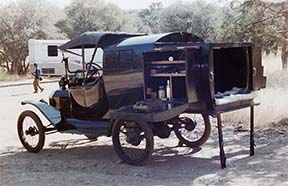
The RV slide-out was one of the most prominent evolutionary concepts that defined the Neo-Classic Era (1990-2007). The RV Industry Association (RVIA), federal and state government agencies had precise length measurement and weight restrictions for recreational vehicles.
The first RV slide-out can be credited to Gustav Bretteville in 1915 on his Automobile Telescoping Apartment that fit inside the Model TT truck (1917- 1927) that came with a cargo bed. If you wanted one of these expandable slide-out proto-truck campers, it’d cost you $100. Of course, that’s after you paid $600 for the Model TT chassis and whatever you paid to add the body (Ford would include the body in 1924 and lowered the price to $325 in 1926).
In the second half of the Vintage Era (1945-1970) and all of the Classic Era (1971-1989), towable RVs would occasionally feature an expandable section that increased the width of the living room or bedroom. Still, consumers didn’t like them too much. The problem was that they broke often and were very labor-intensive. Until the Neo-Classic Era, the park model RV category had the most success with slide-outs and tip-outs.
Who Created the First Power Slide Out
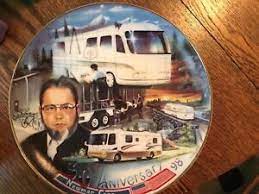
In 1990, a Mennonite Pastor created the first power slide out, even though his company was against hit. Mahlon A. Miller, owner of Newmar RV at the time, developed the Dutch Star and Mountain Air Class A motorhomes in the 1980s.
Against the advice of his engineers and staff, he installed the first powered slideout on one of their fifth wheels to prove it was possible to put one in a motorhome and travel trailer. Miller then hitched up the prototype to a truck and drove it on the roughest road in the area. When he came back, he showed all the nay-sayers that the slide-out still expanded and contracted. Their only response was:
“Well, maybe we can put a slide-out in a motorhome!”
The power slide-out was one of the many achievements that earned Miller his spot in the 1998 Class in the RV Hall of Fame. It took three years for the rest of the RV Industry to figure out how to add power slide-outs to their RVs.
Are RV Slide Outs Worth It?
In today’s RV marketplace, RV slide-outs are worth it to those that choose the extra width over the added expense and weight. RVs without slides have regained their popularity due to the space-conscious floorplans, features, and price savings.
Modern slide-outs are lighter, stronger, and more versatile than their Neo-Classic ancestors, but they come at a cost. Setting aside the pricing, chassis-mounted slide-outs in some RVs eliminate exterior storage bays. Those that have bays in the slide-out have reduced cargo capacities because of reduced weight tolerances.
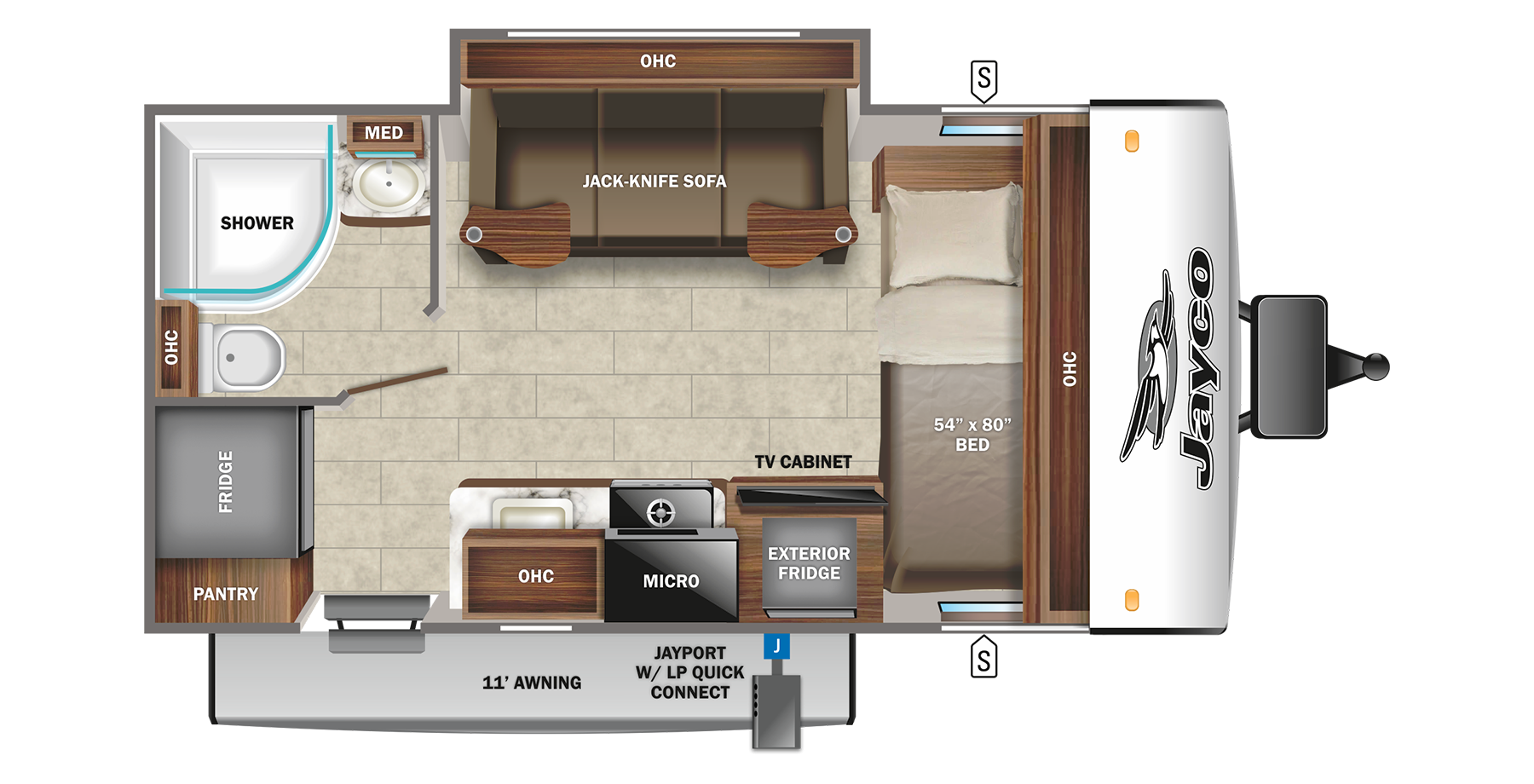
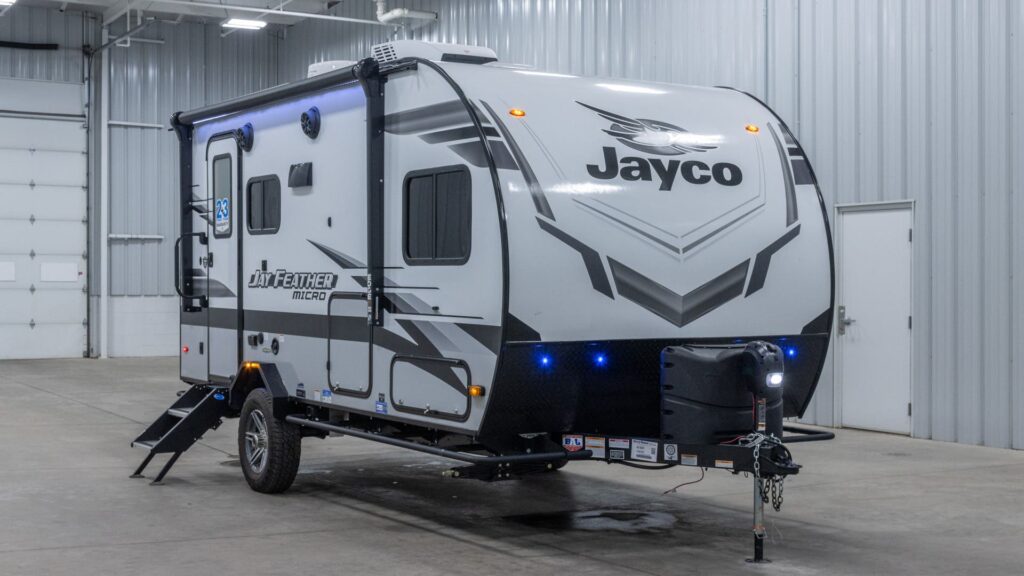
Some slide-out floorplans in travel trailers maximize shortcomings. For example, the Jayco Jay Feather Micro 166FBS uses the multi-purpose sofa on the slide to hide the off-door wheel well that creeps into the interior space. In a small travel trailer series like this, where every square inch matters, the slide-out turns a negative into a positive.
How Often Do RV Slide Outs Fail?
RV slide-outs often failed in the early days when the slide-out box was attached to the frame. Owners would have to realign a slide-out on their camper if it fell off the track. The mechanism would bend or break on rare occasions due to the slide-out box being overweight.
Today’s slide-out technology is much better. During your RV preventive maintenance routine, you want to add the slide-out to the list. Many times, RV bump-outs fail from neglected mechanisms, debris, or other easy-to-solve issues. There are instances where the parts wear out from age and usage. Spraying a slide-out lubricant on the track and other moving parts is the best way to extend the lifespan of your RV slide out mechanisms.
Another RV slide-out failure factor is overloading the slide-out box. Typically, the average slide-out has a Cargo Carrying Capacity (CCC) between 600-1,500 pounds. Manufacturers may install cabinetry or exterior bays on the slide-out box, but you’ll want to store light items like clothing or light secondary accessories. Keep your RV toolbox, outdoor furniture, and other essential accessories in storage areas that use the primary frame and chassis for load-bearing.
RV manufacturers are installing a manual slide device in case the electronics fail. Check your owner’s manual for the location. Many RV companies place them under the chassis, beneath the entry door. However, some brands don’t provide an opening in the chassis rail, so you’ll need a ⅝ socket wrench to operate the slide-out if Lippert makes the chassis.
Due to the weight of heavier slide-outs, you’ll want to purchase a bit that fits your electric drill. Your RV may come with RV slide-out hand crank, but to avoid risking your back or other muscles, let the drill do the work for you. You can add a flexible drill bit extension to help you get into that hard-to-reach spot for the manual override.
Do RV Slide Outs Leak?
RV slide-outs leak air and temperature when the weather stripping doesn’t form a tight seal against the slide box. When running through your RV maintenance checklist, ensure you’re spraying the stripping with an RV rubber conditioner to keep it pliable. This spray also prevents your RV window seals from shrinking out of their positions. Our article on our RVBlogger Website, 12 Best Ways to Insulate a Travel Trailer for Winter, details this and other fantastic RV topics.
If you still need to fix a leaking RV slide-out from escaping A/C or furnace heat, use cloth door snakes around it as an insulator. Cloth draft stoppers keep winter air from coming through residential doors and windows, and they’re easy to fit against your slide-out.
Do You Need RV Slide Out Supports?

Modern motorhomes and travel trailers attach pop-outs on the chassis, so you won’t need RV slide-out supports during part-time trips. However, full-time RVers or those that use their coach for extended periods may tell you that slide-out supports are worth having. You can read the full discussion in our article about them.
RV slide-out supports are priced under $100 and come in twin or four packs. Many of the popular brands come with weight limits of either 1,000 or 5,000 pounds. The jacks telescope down, so they’re easy to store and don’t take up a lot of space. We found one creative RV storage solution where the RV owner installed the slide-out supports behind the cockpit seats for easy access.
The added support helps on uneven ground, better support weight, or when the slide-out gets a lot of use. Generally, people use the beds in RVs for sleeping. In a travel trailer with a rear slide-out bed, the master bed is empty during the day. For someone with a disability that needs to spend some days in bed, adding slide-out supports can keep elongated stress off the track.
Do You Need Slide Out Toppers or Awnings?
If your motorhome or travel trailer doesn’t come with them, you need slide-out toppers or awnings. The primary awnings on Modern Era RVs shelter door-side slide-outs from debris and weather. You can install slide-out awning kits for less than $100 that roll in and out with the pop-out box.
Allowing debris like tree branches, leaves, and even dirt to settle on the top of your slide-out can prevent the weather stripping from forming a good seal. Even with toppers and awnings, you may want to grab your telescoping ladder once a month and a rag to wipe off the top of your slide box from any airborne sediment.
Should You Leave Your RV Slides In or Out?
Our RVBlogger Facebook Friends on RV Camping For Newbies often ask if they should leave their RV slides in or out when it’s not in use. In storage situations, it’s best to keep the slide box pushed in, keeping the coach in travel mode. From a structural standpoint, it keeps all the weight directly on the chassis, reducing the possibility of long-term sagging concerns.
RV storage facilities require the slides contracted because they need the space to fit other client motorhomes, travel trailers, boats, and other oversized items. In addition, the fiberglass shell keeps the sun and weather exposure away from the rubber seals, which is always a concern. Finally, keeping the slide-out box inside the RV prevents pests from getting inside.
5 Different RV Slide Out Systems and How They Work
There are two different RV slide-out systems that RV manufacturers use. Most of them use electric motors on each slide box independent from each other. The other major system uses a hydraulic pump to open all or specific slide-outs. Each has its benefits and burdens.
1. Cable Slide Out Mechanisms
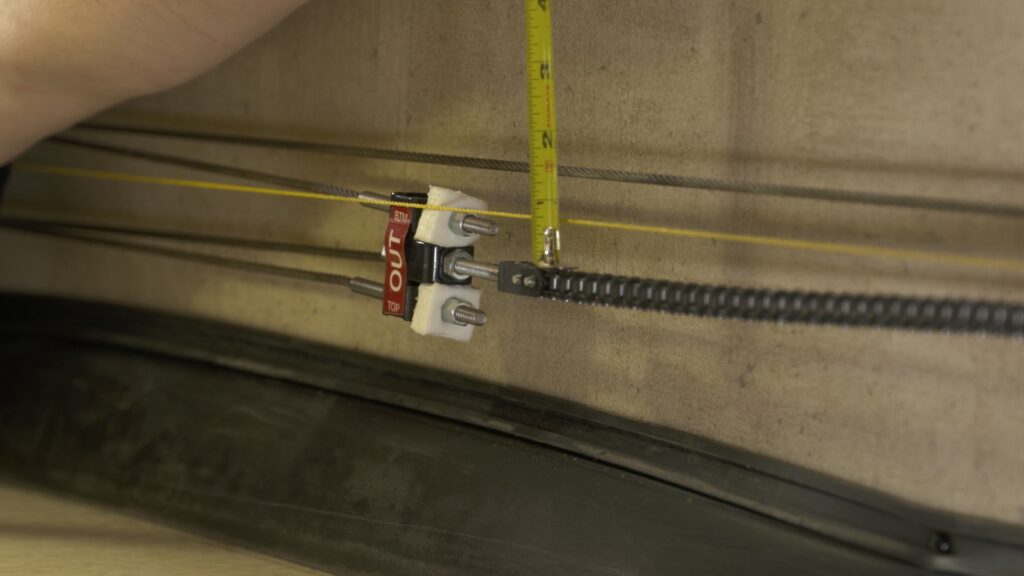
The cable RV slide-out system works well for deep and large slide boxes. An electric motor uses an aircraft-grade metal cable strung through a system of pulleys to move the slide-out. You’ll find them on smaller travel trailers and fifth wheels with dual slide living rooms. They are very durable, but the box’s sides and top need a few inches inside because of the motor’s position.
2. Rack and Pinion Slide Out Mechanisms
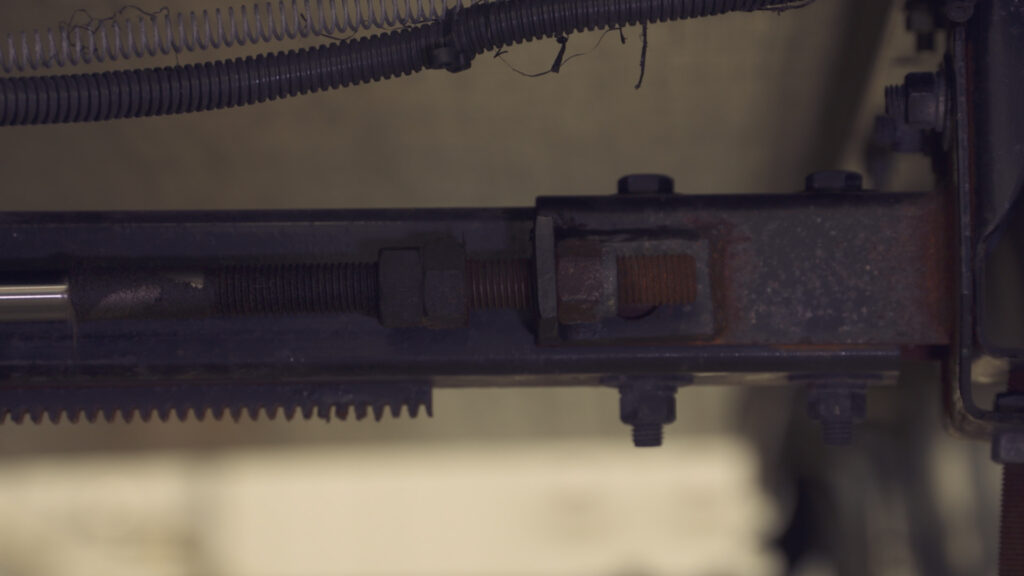
RV manufacturers often use this RV slide out mechanism when they want the slide box to sit flush with the main floor. The under slide-out electric motor pushes the box out, spinning two pinion sprockets. As the pinion pushes each rack tooth forward, the slide expands. The system’s heavier, but the box becomes flush against the RV wall, and it’s more affordable.
3. Schwintek Slide Out Mechanisms
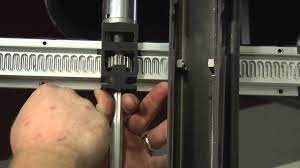
This slide-out device uses worm gear and rails to expand and contract the slide box. These RV slide out mechanism types are ideal for shallow slide boxes that are lightweight and cost-effective. Overloading them can eventually burn out the motor. They’re suitable for single-piece furniture slides. Schwinteks are self-adjusting, so if one side is further out, the other will further advance to become flush.
4. Power Gear Slide Out Mechanisms
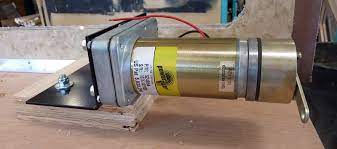
The power gear slide-out mechanism uses an electric motor to expand and contract small slides directly. They’re installed under slide boxes that are lightweight; usually, master beds and wardrobe slides. Power gear mechanisms were popular for secondary slides in the Neo-Classic Era, then disappeared for a while. In today’s Remote Period of the Modern Era (2020-Present), they’ve made their return.
A variant of the power gear slide-out mechanism showed up when Newmar incorporated the HWH Cog Slide-Out System in their gasser Class A motorhomes. Depending on the size of the box, 1-4 softball-sized cogs at the edge of the chassis would lift the slide box, expand it out and ease it down, creating a level floor expansion to the main center aisle. A locking arm or top chain would keep it in place while collapsed, to prevent the top of the box from sagging out.
5. Hydraulic Slide Out Mechanisms
This type of RV slide-out system is lightweight, and the gears are mounted flush to the RV’s main wall. They’re similar to the Schwintek system. You won’t see any tracks or mechanism components on the outside. The placement of the electric motor is inside the wall. This RV slide-out mechanism is ideal for lightweight purposes like east-west master beds and wardrobes.
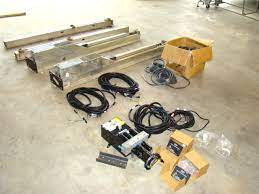
Hydraulic systems are ideal for heavy full-length slide boxes found mainly on full-profile fifth wheels. One motor can pump fluid to multiple slide-outs to move them. Many of today’s RVs with kitchen appliances and furniture have a hydraulic system installed. They move faster than electric motors, and you’ll identify them by their fluid reservoir. However, cold temperatures make them move slower.
What is the Best RV Slide Out System?
For most RV categories, the best RV slide-out system is the rack and pinion system for the main room. Electric motor slide systems are more cost-effective than hydraulics, and the rack and pinion mechanism has the highest weight-bearing capacity. That’s why you see them most often on motorhome and travel trailer living room slide-outs.
Hydraulic RV slide-out systems are best on full-profile fifth wheels and large fifth wheel toy haulers due to the weight the massive main floor slide boxes carry. However, many half-ton fifth wheels stick to the more affordable electric motor slide systems since their boxes are more travel trailer-like.
Schwintek slide out mechanisms tend to hold up best for master bedroom and wardrobe secondary slides. The system is track-based and has a higher weight capacity than power gear devices. They’re also easier to maintain since you’ll have easier access to the motor and track.
Will an Extended Warranty Cover My Slide Outs ?
Yes! Unfortunately, your odds of suffering a major mechanical breakdown go up with every passing year. Based on RV Warranty claims records, more than 3 out of every 10 RVs will need major repairs in only their second year on the road. This skyrockets to 8 out of 10 in their fifth year, and virtually ALL of them in their eighth year! Today’s RVs are increasingly more complex, and with more things to go wrong, the need to protect your investment is more important than ever.
Our RV Warranty plans allow you to change your mind! If you’re looking to sell your RV to a private party, you can absolutely transfer the policy to the new owner. Additionally, if you are trading in your RV, or getting out of RVing altogether, you can cancel your policy for a pro-rated refund.
We bought a warranty through Wholesale Warranties for several reasons:
- We can cancel the warranty at any time and get a pro-rated refund
- We can transfer the warranty to the new owner if we decide to sell our RV
- There are no mileage caps on our policy
- We can use repair shops all across the country
- We can use a mobile repair company right at our campsite
- The price is way better than most dealerships
- We could finance the cost of the warranty
- With parts and labor prices increasing all the time, we have peace of mind
You owe it to yourself to at least check out a warranty and get a free quote to see if it is right for you. It just takes a few minutes and you will learn a ton about protecting your investment. We only recommend products we use ourselves and we highly recommend you get a free quote from Wholesale Warranties.
Conclusion: How Long Will Slide-Outs Last?
The RV Industry is doing great things with non-slideout coaches in every category, so how long will slide-outs last, and what does the future look like for slide-out RVs? As the RV World shifts from fuel-based to all-electric traveling, the campervans and small travel trailers are the best categories to watch. We’re seeing slide-outs on the driver’s side, passenger side, rear, and pop-up lofts.
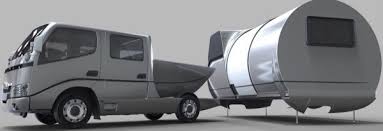
BeauEr, a French RV Company, makes a small travel trailer that fully expands to three times its width. In addition, the company introduced a drivable version where the cab separates from the camper, solving the toad issue. So we can say with confidence, slide-outs aren’t going anywhere.
Bot the American and global RV markets plan on continuing to produce slide-out floorplans. You can learn more about them through our RVBlogger Website, where we dive deep into everything you want to know about the RV lifestyle. In addition, you can discuss it with our thousands of friends on the RV Camping for Newbies Facebook Group and explore the latest RV models by topic on our weekly YouTube videos on the RVBlogger Channel.
If you’re looking for the best essential accessories and gear, check out what we use on our Gear page. You can also find Mike and Susan on Instagram to see how and where they travel to learn more about them.
Make sure you sign up for your FREE copy of RV Camping Magazine. Each month, Mike and Susan feature articles from excellent guest writers that have exciting stories to tell. The National RV Training Academy has its maintenance tip and video to keep your coach in capital condition every month. You’ll also have the chance to join an RVer on their trip to an incredible destination and see the sights with them. You’ll see features on the latest tech, remodeling tips, RV recipes, and much more.
So, as Mike and Susan say: Make sure you leave your campsite better than you found it, thanks for reading, and we’ll see you next time.
Related Reading:
115 Point RV Inspection Checklist (New or Used)
Fifth Wheel vs Class A Motorhome – Pros and Cons to Help You Choose Before You Buy
12 Best Questions to Ask When Buying a New Camper
10 Best Questions to Ask When Buying a Used Camper
3 Best Class B RV Floorplans with Slide Outs
Brian Newman – Author and Full Time RVer
Although he’s from Motown, Brian Newman is a legacy RVer that grew up on I-75. He, and his wife have enjoyed the full-time RV lifestyle since 2017.
Like John Madden, he hasn’t “worked” in years because he gets to write about his passion. When he’s not working, he supports his daughter’s dog rescue efforts and disability causes.


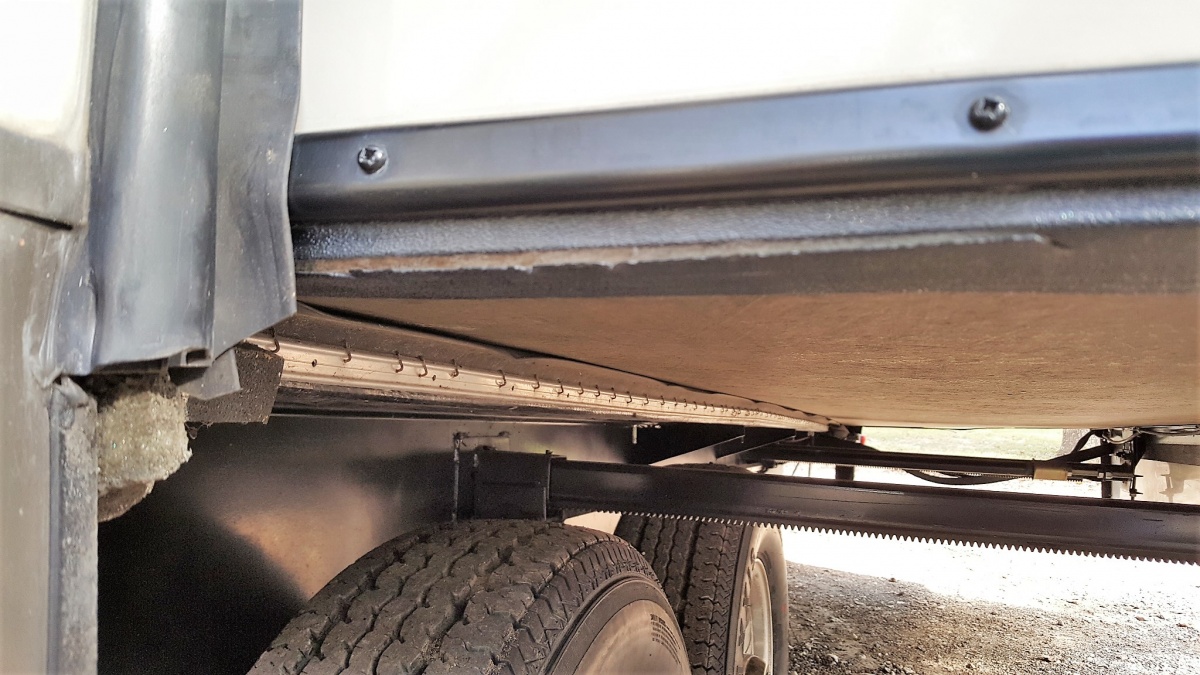
I love the slide out mechanisms on RVs! They make getting in and out so much easier.
I really find your articles very informative and helpful being a new RV’er and all. Me and my wife recently purchased a 36 foot Keystone Sprinter bumper pull travel trailer. Of course we got seen coming and going. The “gentleman” (and I’ll use that word sarcastically) doctored it up and made it look really pretty for being a 1998 model and all and we being new to it all got taken pretty good. I’ve since found damage from termites and water leaks that had been covered and glossed up to appear much better than we ever expected. Luckily I am a framer and contractor by trade so it is all just about learning all the little tips and tricks of the trade as you all greatly explain and introduce us all too. Thank you guys for all the information you share and I’m thirsty for ever drop of knowledge I can obtain from you guys since and the wife have decided to tear it down to the steel trailer frame and start from scratch and do everything completely custom to our needs and wants within reason. Because this is not only our means of seeing the states but our long term home as well.
Schwintek is absolute trash, I work on RV’s every day, and this is the worst system ever!!
We need to replace out slide track on our Thor motor home. It is only 1 years old and we have used it 3 times. The slide keeps sticking out. We live in northern Michigan, what would you suggest? The slide is 23’3″ long.